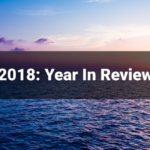
2018 Year in Review
December 10, 2018
Fire, Water and the Butte Creek Salmon
February 26, 2019PME is proud to support continued research of the natural environment. This fall we gave grad students the opportunity to submit their research proposals for the chance to win a miniDOT® Logger to assist them in their research.
After reviewing all of the great submissions, our CEO, Kristin Elliot, generously decided to give away three miniDOT® Loggers instead of the planned two. Please see the chosen winners and their research plans below and stay tuned for updates as their research data comes in!
Rachel Pilla | Miami University, Oxford, Ohio
Application:
This miniDOT® Logger will be used to study temperature and oxygen dynamics in lake ecosystems, where external stressors such as climate change are influencing water quality, trophic interactions, and oxygen availability. In lakes and oceans across the world, oxygen depletion has become increasingly prevalent, leading to anoxic “dead zones” and mass fish kills in areas such as the Gulf of Mexico and Lake Erie.
Rachel is pursuing research to understand the drivers of oxygen depletion in these lakes. In recent years, her lab has observed never before seen deep water oxygen depletion during summertime in their clearest study lake. This has prompted much of this research and interest in a comparison across different types of lakes.
In north temperate lakes such as these, oxygen availability is influenced by vertical mixing of oxygen to deep waters and oxygen consumption via respiration, which determines both the prevalence and extent of oxygen depletion throughout the year. During wintertime, ice cover creates inverse stratification that limits vertical mixing of oxygen to deep waters by creating a density barrier to mixing. This can lead to oxygen depletion in deep waters where oxygen consumption is high but cannot be replenished due to inhibition of vertical mixing. After the ice melts in the spring, the lakes have a mixing period that replenishes oxygen in the water column. As air temperatures rise in late spring, the summer stratified period begins, which again prevents vertical mixing of oxygen to deep waters. This, combined with high oxygen consumption rates in deep waters, leads to oxygen depletion and potentially complete anoxia. The relative timing and duration of these mixing vs. stratification periods are large determinants of oxygen depletion in lakes.
Deployment:
The miniDOT® Logger will be deployed in one of the three lakes located in the Pocono Plateau region of northeastern Pennsylvania for year-round measuring of temperature and dissolved oxygen every 10 minutes.
Goal:
Dissolved oxygen data is the main variable of interest in her goal of measuring the rate and extent of oxygen depletion during winter ice cover and summer stability. Rachel plans to use the change in dissolved oxygen data as one method of estimating the mixing and stratified periods. For example, a stark increase in deep water dissolved oxygen indicates the onset of spring or fall mixing. Conversely, a continuous decrease in deep water oxygen indicates oxygen depletion occurring during a stratified period. The temperature data will also complement these measures in estimating the timing of these events. During ice cover, you can expect to see colder surface water temperatures compared to deep water temperatures due to inverse stratification. During mixing periods, the temperature throughout the water column should be approximately equivalent. An increasing surface temperature in late spring is indicative of onset of summer stratification and should coincide with the beginning of deep water oxygen depletion. The high-frequency nature of these loggers is imperative in estimating the timing of mixing vs. stratified periods, since they can occur rapidly, and weekly or monthly manual sampling can easily miss the start of any of these events, making the miniDOT® Logger ideal for her research.
Ariel Pezner | Scripps Institution of Oceanography, University of California San Diego
Application:
This logger will be used in two complementary ways. First, the miniDOT will be used in a field experiment to continuously record dissolved oxygen and temperature conditions near outplants of the coral Oculina valenciennesi at one of four depths. The logger will be attached to a structure containing tiles with attached coral nubbins in order to continuously characterize the changes in dissolved oxygen and temperature at the site throughout the summer and fall.
The logger will then be used in a mesocosm aquarium experiment where Ariel will test the effects of hypoxia, ocean acidification, and their interactions on coral calcification. The logger will help monitor and characterize the oxygen and temperature conditions in the experimental units for the duration of the study.
Deployment:
Both the field and lab experiments in this study will take place in Bermuda. The field study will take place at Devil’s Hole, a ~25 m deep sinkhole in Bermuda’s Harrington Sound, which experiences annual seasonal hypoxia beneath the thermocline. In the field experiment, the miniDOT® Logger will be deployed at a shallower transplant site (approx. 9 m) next to the coral nubbins to continuously record the dissolved oxygen and temperature conditions that the corals experience over the course of the deployment. This will complement data recorded by a SeapHOx deployed at the deeper site. The field experiment will run for approximately 4-5 months (June – October) in order to capture the full seasonal hypoxic event in Devil’s Hole.
In the mesocosm study, the logger will be placed within one of each aquarium treatment tanks at the Bermuda Institute of Ocean Sciences to continuously record the dissolved oxygen concentrations and temperature experienced by the corals under manipulated conditions. The mesocosm experiments will run for 2-3 days in order to capture two full 24-hour cycles of incubation.
Goal:
As a result of climate change and coastal eutrophication, hypoxic events are predicted to become more prevalent and oxygen minimum zones are expected to expand across the globe. Despite substantial literature on hypoxic events in temperate zones, only two studies have examined the effects of widespread hypoxic events on coral reefs. In addition, hypoxic events are often associated with local ocean acidification as the high rates of respiration that can lead to reduced O2 concentrations also lead to high pCO2 and low pH.
Environments such as estuaries and tide pools regularly experience these conditions, and studies of organisms from these systems show that hypoxia and acidification synergistically affect physiological processes. However, no studies have examined the simultaneous impacts of hypoxia and ocean acidification on corals, despite the likely co-occurrence of these stressors in the field. Continuous oxygen data is necessary to (1) track the seasonal hypoxic conditions experienced at Devil’s Hole in the field and therefore experienced by the corals naturally and (2) to accurately characterize the oxygen conditions experienced in the experimental aquaria in the mesocosm study. Together with collected biological data such as calcification rates, high frequency dissolved oxygen time series data will help clarify the extent to which coral calcification and physiological processes are impacted by low oxygen conditions and thus how corals may fare under future change.
Annie Adelson | University of California, San Diego
Application:
The miniDOT® Logger will be used as part of a larger field campaign on a coral reef. The goal of this campaign is to determine what initiates hypoxic events in tropical bays and to examine the role of advection in its breakdown. Coastal oxygen depletion has been primarily studied in temperate waters, though research suggests that its occurrence in the tropics is underreported. While similar in some respects, fundamental differences in the tropics lead to alternate mechanisms controlling hypoxic events, including annual patterns in solar radiation and rainfall. Oxygen is less soluble in warmer water, and hypoxia on coral reefs may work synergistically with stressors like ocean acidification and elevated temperatures to increase likelihood of mortality. The paucity of comprehensive observations of hypoxia in the tropics demonstrates a critical need for research to understand the dynamics of these events.
Deployment:
The logger will be deployed for three months in Bahía Almirante, a semi-enclosed tropical embayment on the Caribbean coast of Panama, which has recently experienced widespread coral bleaching events due to low oxygen levels combined with warming. Bahía Almirante is home to critical research on corals, mangroves, and seagrasses.
Goal:
The goal of Annie’s work is to develop a predictive understanding of the dynamical processes that determine the magnitude and duration of hypoxic events in tropical bays. Oxygen data is a critical piece of this puzzle.
Delivering Precise Measurements
Learn how our exceptionally accurate and long-lasting monitoring instruments can assist you in your research of the natural environment by contacting us today.






